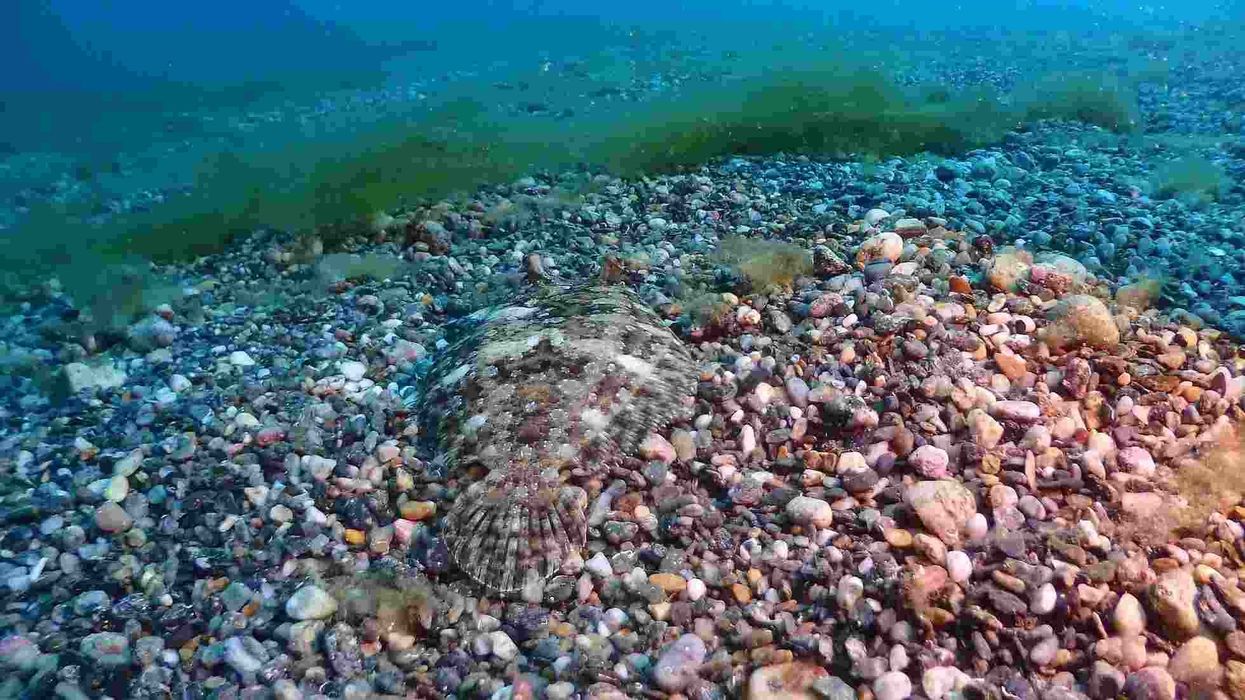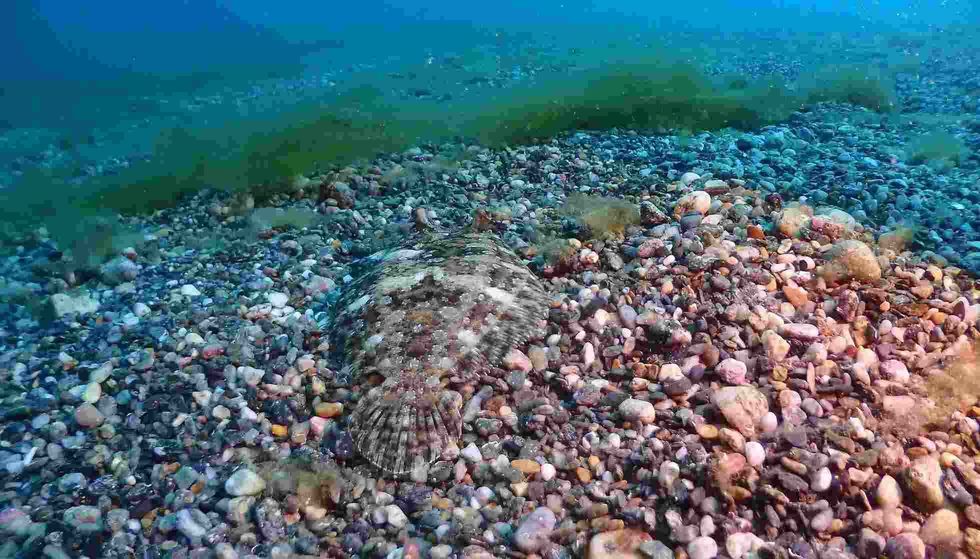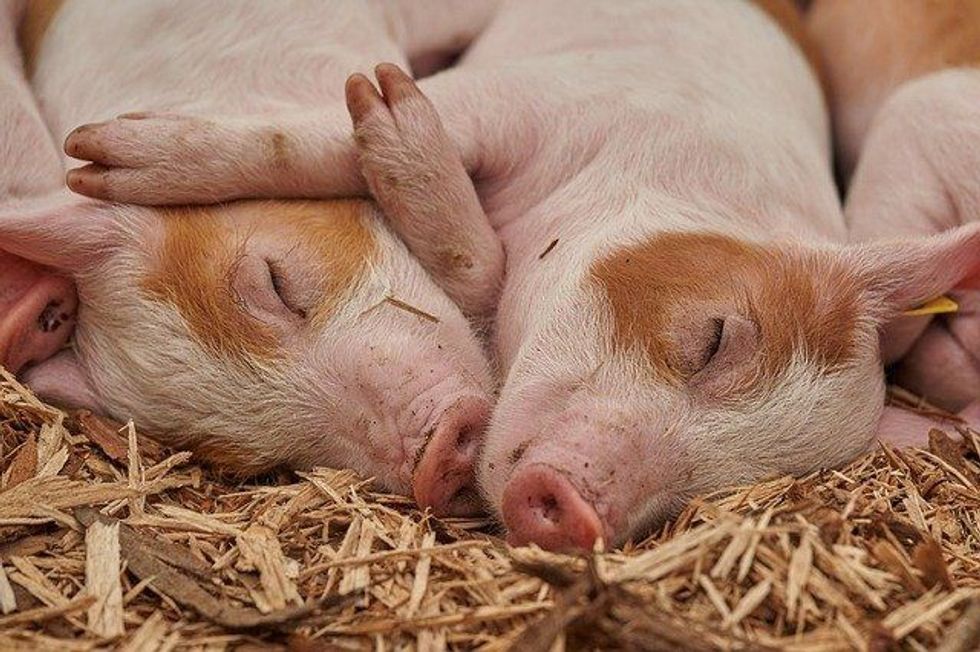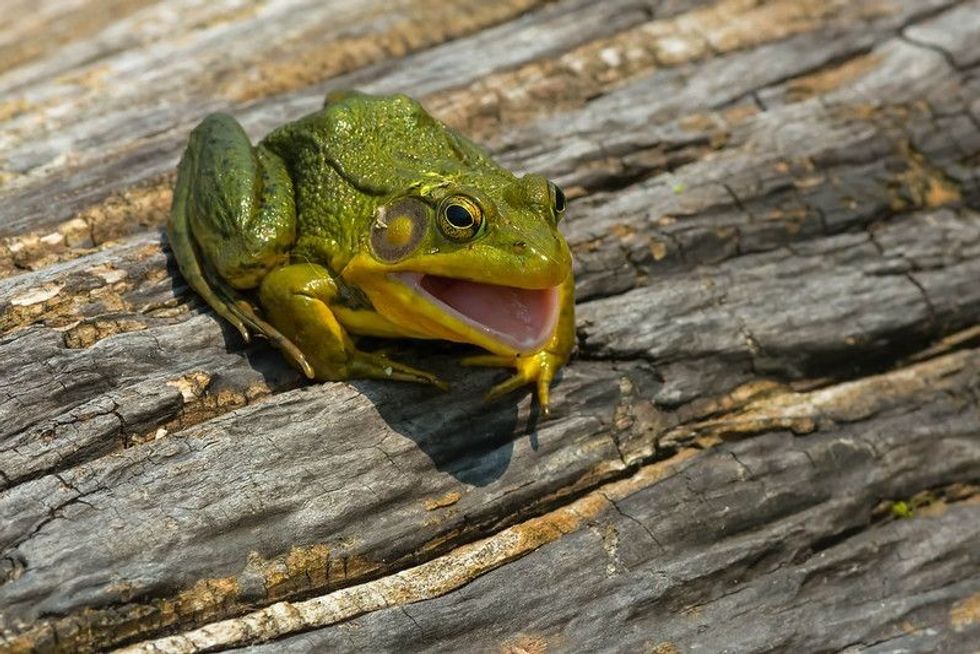Sole fish, also known as Dover fish, is a kind of valuable food flatfish in Europe. Solea solea is the sole fish's scientific name. The distribution of sole fish range from the Eastern Atlantic to the Mediterranean Sea.
Although, it migrates to other regions with warm water in the winter. Their habitat includes brackish seawater with muddy or sandy ground. Another name of this fish includes a black sole and a Dover sole.
The Dover name of the fish comes from a Dover place in the UK, where they were abundantly present in the previous time. In the United Kingdom, the fish is generally known as a 'slip' in the fish market. They are a kind of flatfish.
This fish species is also known as flatfish due to its flat body features. There are nearly 180 species of Sole fish and mostly belong to the Soleidae family.
The description of Solea solea includes a flat body, two eyes on one side of the body, a mouth, dorsal and anal fins.
They have one eye on each side of the body and have acquired brown-gray with darker patches on the entire body and a black spot on each pectoral fin.
The solenette (Buglossidium luteum) fish are similar to Dover fish, but the former is much smaller (up to 13 cm) than the latter. As a diurnal fish species, the Dover fish feed on several small creatures during the day.
If you enjoyed learning about this fish species, you might also want to check out neon tetra facts and round goby facts.
Common Sole Interesting Facts
What type of animal is a common sole?
The common sole, also known as Dover sole or black sole, is a flatfish that is famous in Europe.
What class of animal does a common sole belong to?
The Dover sole (Solea solea) is a fish species that belongs to the class Actinopterygii of phylum Chordata. This marine fish is one of the members of the flatfish family.
How many soles are there in the world?
The population size of Dover sole fish has not been estimated yet.
Where does a common sole live?
The distribution range of common sole or black sole fish ranges from the Eastern Atlantic ocean to the Mediterranean Sea, including the northwest coast of Africa, Sea of Marmara, Sea of Bosporus, Norway, and Senegal, including Cape Verde. Its distribution extends to some parts of the southwestern Black Sea.
However, in winter, the fish migrates to warmer waters of the North Sea.
The black sole fish is most common around the coasts of the British Islands, the north coastline of Germany, and the seashore of France. It is quite popular in Europe.
What is a common sole's habitat?
The sole fish habitat includes marine shallow-water regions with sandy and muddy surfaces. It prefers a temperature range between 46-75 F (8-24 C). It is an oceanodromous fish that is often found in the demersal zone.
Who do soles live with?
The common sole fish are solitary creatures. They live alone their whole life.
How long does a common sole live?
The Dover sole is a long-lived flatfish species. Its lifespan ranges between 24 and 40 years, which is not common in marine life.
How do they reproduce?
The common sole (Solea solea) fish reach adulthood at the age of three to five years. They begin to reproduce at this age when the height reaches from 25-30 cm in length.
The lifecycle of this species goes through four different stages: egg, larva, juvenile, and adult. Both eggs and larvae of this species are pelagic.
The spawning season ranges from February to May in areas like the coasts of Galicia. Still, in some regions, such as the Mediterranean Sea with warmer waters, it can happen at the starting of winter.
In the North sea, the spawning period is from April to June. One of the most important spawning grounds for Solea solea is the Wadden Sea.
This fish species prefers to spawn in brackish coastal water with temperatures between 18-37.5 F (6-12 C). After the fertilization of eggs, the hatching occurs after the incubation period of around five days at 12 C. In the beginning, the larvae appear the same as the sound fish.
Still, as they grow, they undergo amazing development. The common larvae take nearly 35 days with a temperature of 18 C to metamorphose into juvenile sole fish.
During two to three years, Juvenile sole fishes are usually found in the coastal nurseries (bays and nurseries). After that, they migrate to deeper waters.
The eggs and sole larvae make the diet of a broad range of inshore marine creatures. The sole fish life years range from 24 and 40 years in the wild.
What is their conservation status?
The conservation status of the Dover sole species is Data Deficient because the information regarding this fish species is insufficient to produce any result. However, Solea solea fish are long mature fish with a life that lasts for a long period.
This quality is what makes fish vulnerable to fishing pressures.
It is a popular water animal in Europe, and overfishing in this continent has produced seriously reduced populations, with dropping catches in numerous areas. For instance, according to the United Kingdom Biodiversity Action Plan, the western British coast and Irish Sea sole fisheries face latent blackout due to extreme sole fishing.
With other marine animals, such as monkfish, cod, and plaice, this fish is listed as 'outside safe biological limits' on the list of ICES. In 2003, the sole and flounder (groundfish) was estimated to be only around 10 % of pre-industrial levels.
In 2006, the World Wildlife Fund stated that seven out of nine sole stocks were overexploited, with the position of the remaining two unclear.
Greenpeace International added the Dover sole to its red list of seafood in 2010. This red list is a list of marine food items broadly sold in supermarkets around the world.
Common Sole Fun Facts
What do soles look like?

The members of the sole species (Solea solea) have two small eyes on one side of the body. With this lurking half-buried body description, the fish fool the predators by behaving like a dead organism.
Like all other flatfishes, the common sole is born with one eye on each side of the body. When the larvae metamorphized into a juvenile, one eye shifts to the other side.
The distinct characteristics of this fish include an oval body and asymmetric eyes, generally located on the right side. The top eye is situated under its diameter from the upper side of the head.
The upper body of the sole fish is gray-brown, and the ventral side is white. They can reach a maximum length of 28 in (71.12 cm).
The dorsal spines and anal spines are absent, but they have 69-97 dorsal soft rays, 53-80 Anal spines, and 46-52 vertebrae. Dorsal and Anal fins run on the entire length of the body of this fish.
This fish also possess an arched mouth, preopercle, scaled opercula, distinct caudal peduncle, the pectoral fin on the right side with dark spots, and dorsal fin on the horizontal axis. All over the body, there are rectangular ctenoid scales.
How cute are they?
The Dover sole fish do not look cute at all as they possess a poisonous look, even though they are not poisonous.
How do they communicate?
No information is available regarding the communication in the sole species.
How big is a common sole?
The common sole (Solea solea) length is 28 in (71.12 cm), which is 20 times bigger than sargo fish.
How fast can a common sole swim?
The swimming speed of this fish is unknown.
How much does a common sole weigh?
The weight of this fish is over 6.6 lb (3 kg). They are about six times lighter than the blobfish.
What are the male and female names of the species?
There are no specific names available for the male and female of this fish.
What would you call a baby common sole?
The baby common sole (Solea solea) is normally known as a young or offspring.
What do they eat?
As a carnivore species, the Solea solea feed on worms, mollusks, small fishes, and crustaceans.
Are they poisonous?
No, the common sole (Solea solea) are non-poisonous marine creatures.
Would they make a good pet?
Solea solea fish are not beautiful animals; therefore, people do not keep them as pets.
Did you know...
Hemibdella soleae is an ectoparasite of the common sole.
They are known as sole fish because they have a flat undersurface.
Different types of sole
There are mainly three types of sole fish, true sole (finless and yellow sole), American sole (ray-finned fishes), and tongue sole (Bengal tongue and carrot tongue sole).
Do humans eat them?
It is one of the most sought-after fish delicacies around the world, especially in Europe. People love its mild, buttery, sweet flavor and are considered a good fish to savor. They are also considered to be a healthy source of food. Along with the common sole, the lemon sole is also popular seafood.
Here at Kidadl, we have carefully created lots of interesting family-friendly animal facts for everyone to discover! Learn more about some other fish from our clown rasbora facts or pigfish facts pages.
You can even occupy yourself at home by coloring in one of our Common Sole coloring pages.










